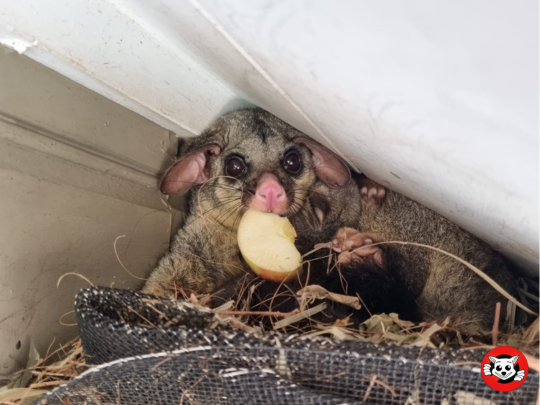Possums are often seen as cute and harmless creatures, but they can become quite a nuisance when they reside in your home. These nocturnal animals are known to seek shelter in residential areas, causing disturbances and potential property damage.
While it is necessary to remove them for the safety of your home, it’s critical to ensure that the process is humane and considers the animal’s welfare. Drawing insights from Possum Buster’s expertise, this guide aims to equip homeowners with essential knowledge for successful and considerate possum removal.
Understanding Possum Behaviour
Possums are primarily nocturnal creatures seeking warm, safe shelter environments. They often find residential areas appealing due to the availability of food and nesting materials. Their common places include roofs, chimneys, and other secluded spaces within homes.
Understanding possum behaviour is crucial to effective removal. Recognising signs of possum activity, such as noises in the roof at night, can help homeowners identify a problem early on. However, it’s important to remember that possums are protected wildlife in several regions, so any attempt to harm or kill them could result in penalties.
The Possum Removal Process
The removal process is systematic and carefully thought out. It starts with an initial inspection to identify the possum’s entry points and nesting areas. This step is crucial in understanding the extent of the possum’s intrusion and planning an effective removal strategy.
Once these areas have been identified, one-way exits are installed. These allow the possum to leave the property safely but prevent it from returning – a smart and humane solution that respects the possum’s instincts while protecting your home.
The exit points are sealed to ensure no future access for the possum or other wildlife. This comprehensive process minimises stress for the possum, ensuring its safe relocation while restoring your home to its previous state.
Legal Aspects and Compliance
It’s important to note that there are legal aspects involved in possum removal. Wildlife conservation laws often dictate that possums must be captured and removed in a manner that minimises their stress and harm. In some jurisdictions, homeowners may even require a permit to remove possums or engage a licensed professional.
Violating these regulations could result in penalties, so homeowners should familiarise themselves with local wildlife laws and regulations. This ensures that they’re handling possum removal legally and ethically. In doing so, homeowners can contribute to the broader goal of wildlife conservation while protecting their homes from possum intrusion.
Prevention Strategies for Possum Re-Entry
Preventing possum re-entry is as crucial as their humane removal. This task requires a two-pronged approach – making your home less appealing to possums and eliminating easy access points.
Possums are opportunistic creatures that often enter homes through gaps in roofs, chimneys, and walls. You can prevent possums from gaining access by thoroughly inspecting your home’s exterior and identifying these potential entry points. Ensure these spots are sealed promptly with durable materials to withstand any attempts by possums to re-enter.
Your garden may serve as an open invitation to possums. Overgrown trees and shrubs, especially those close to your house, can provide easy access points for possums. Regularly trimming branches that hang close to your house can deter possums, making it harder for them to reach your home.
Like most animals, possums are attracted to readily available food sources. If your garbage bins are left open, or pet food is left outside, it can attract possums. Ensuring your garbage bins are securely closed and not leaving pet food outside can discourage possums from coming near your home. Consider storing your bins in a secured area or use possum-proof lids to keep them out.
Remember, our aim should not be to harm or eradicate possums but to encourage them to return to their natural habitats. These gentle creatures play a vital role in our ecosystem, and we must respect their existence.
By taking these steps, homeowners can effectively manage possum intrusions while maintaining a peaceful coexistence with these creatures, fostering a harmonious relationship between humans and wildlife.
Possum-Proofing Your Home
Possum-proofing your home is a critical aspect of possum management. It involves making your property less attractive to possums, thus discouraging them from taking up residence. One effective strategy is the installation of possum boxes in your yard. These boxes serve as alternative habitats for possums, providing a safe and inviting space to nest that isn’t inside your home.
Next, you should conduct an exhaustive inspection of your property to identify possible possums’ entry points. These can include holes in your roof, gaps under doors, and open vents. Possums are agile climbers who can squeeze through surprisingly small spaces, so thoroughly search. After identifying these potential access points, sealing or repairing them promptly is crucial. This step can prevent possums from entering your home and causing disturbances or damage.
Consider seeking professional advice for this process. Professionals like Possum Busters are experienced in identifying less obvious entry points and can provide expert guidance on effectively sealing them. They may also offer additional possum-proofing strategies tailored to your specific circumstances.
Conclusion
Successfully managing possum intrusions requires a delicate balance. While protecting your property is essential, respecting wildlife and ensuring the humane treatment of these fascinating creatures is equally important. This comprehensive guide has provided insights into understanding possum behaviour, legal requirements for possum removal, humane removal processes, and effective prevention strategies.
The ultimate goal is not to harm possums but to encourage them to return to their natural habitats. By adopting these strategies, homeowners can safeguard their homes against damage while promoting a peaceful coexistence with possums.


